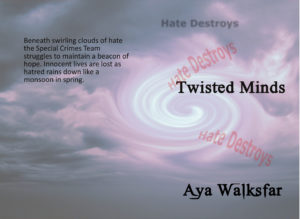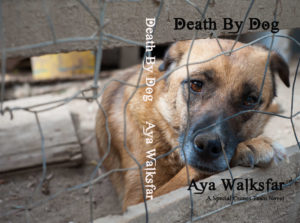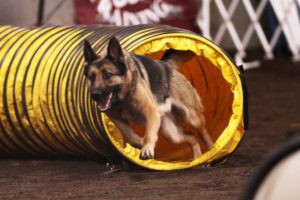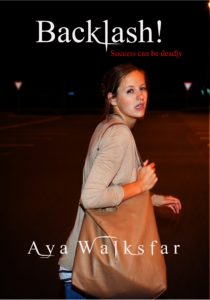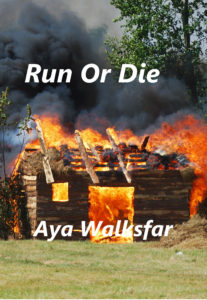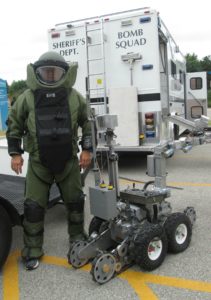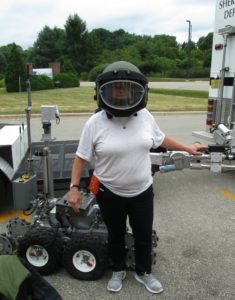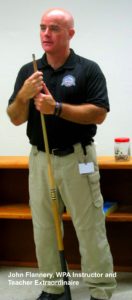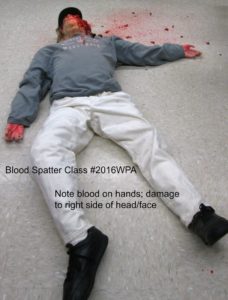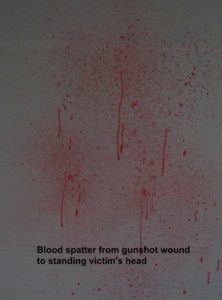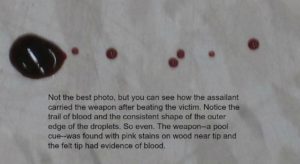
During this past election we all learned a painful lesson: words are powerful. Words were used to fire the fuels of hatred, racism, xenophobia, homophobia, and misogyny. Words shouted loud and often enough besmirched a powerful woman’s career and called into question everything she stood for and everything she had accomplished; they skewed our perspective of Hillary Clinton. Words are powerful.
I learned how powerful words are while sitting at the feet of my mother and grandmother, listening to the oral stories they carried. They transported me to another era, a different culture, a different physical place–a place far different than the ghetto in which we lived. The year of my sixth summer, my maternal, illiterate grandparents presented me the keys to freedom. They talked a Carnegie librarian into teaching me to read and write. Words are powerful.
Words are powerful, especially for those with no voice. I was born with a speech impediment. Combined with that speech difficulty, living in an unpredictable and violent home and neighborhood, I learned that silence often kept me from harm. Even when I started school, I didn’t speak very much. Not talking isolated me from children my own age, and from most other people. Between the pages of books, I met numerous friends, partook of great adventures and traveled to new worlds. Many days, I crawled beneath the concrete city steps that went from our street to the street above and read to my dog. There, in that manmade cave, I shut out the violence that bled all around me. Words are powerful.
Three years after my grandparents helped me learn to read and write, my beloved grandfather was murdered; his killer never discovered. Through pencil and paper, words unclamped the talons of rage and pain that gripped me. I had gained an important weapon to battle the demons in my life. Words are powerful.
My grandfather’s death heralded years of upheaval. Several times during my teen years I arrived at the cliff’s edge of suicide. Each time, I picked up pen and paper and wrote myself back away from that abyss. Books waited to transport me to places far from my despair. Each time I returned from between their covers renewed; stronger. Words are powerful.
During my fourteenth year, cities across the nation erupted in flames and blood. Fired by Malcolm X, Martin Luther King and the bus riders, I wrote a seven part series called Racism: America’s Criminal Disease. A black-owned, black-run newspaper ran my article. For the first time in my life, my words reached beyond the circle of my family. The newspaper staff asked to meet me. They shared some of their dreams with me, a fourteen-year-old kid as if I, too, was a warrior for justice. At age sixteen, a mainstream newspaper published an article I wrote entitled The Forgotten Children: A Look at the Child Welfare System. With words I contributed, albeit in a small way, to important changes in our world. Words are powerful.
Fast forward to the present. Words mold our subconscious; and, our subconscious guides our conscious. You are what you read. You are the stories you learned sitting beside your parents; listening to your history teachers. You are the words spit at you in anger; crooned to you in love. You live the images that you read over and over whether those images portray people of your gender, your sexual orientation, your race, your nationality, your religion, in a positive or a negative light. Words are powerful.
Little girls grow up believing they should aspire to be a helpless princess and wait for a knight in tarnished armor to rescue them. Years later they wonder why they are held prisoner in their own lives. Words create the glass ceiling as much as they build the rape culture. Words can shatter the glass ceiling; words can destroy the rape culture. We see it every day, inch by painful inch as people speak out and rip apart the cloak of acceptance and silence. Words are powerful.
Words are my mantra; words are my weapons. I hone them with story plots and characters; with dialogue and narrative. I intend to change the world, book by book, because I know words are powerful.
The first edition of Good Intentions, an award-winning, coming-of-age novel was published in 2002. Not long after it was released, I received an email from a young man who had been adopted. He said my book helped him cope with the pain unwittingly caused by his adoptive parents’ well-intentioned lies about his biological origins. He thanked me for helping him to heal. Words are powerful.
Life intervened in 2003, delaying any further writing as my days became consumed with other obligations, including the care of two elders who lived with my wife and me. In 2012, Dead Men and Cats, a novella about the impact of hate crime on an isolated community, was published. After that the books refused to be ignored; the characters woke me from deep sleep and chattered incessantly until I arose and wrote their lives; told their stories. Words are powerful.
As a socially conscious writer, my first sacred duty is to entertain. The stories of my mother and grandmother first captured my imagination then they grew their morals in the fertile field of my mind. Any storyteller must first entertain her audience or they will walk away. Sketch of a Murder, a Special Crimes Team novel, is an action packed story about a unit of renegade cops who are set the task of stopping a serial killer who murders wealthy men in gruesome fashion. Detective Suzanne Eviston said, “Loving the book! Especially the killer talking in first person.” Words are powerful.
The second sacred obligation of a socially conscious writer is to enlighten, but not in a preachy, in-your-face manner. Every book I write is well-researched. The management of the crime scene I learned from police officers; how fast a house fire burns I learned from a fire fighter; the length of prison terms for women convicted of violent crimes in 1957, I learned from treatises on the prison system. Through character action and interactions with other characters and their environment, I broach the subject of the impact of gender stereotypes on the working of a unit of cops. In Sketch of a Murder, I dismantle the generally accepted image of homeless people through Molly the Pack Lady. Near the end of the book, I explore how some women discover their sexual orientation. Words are powerful.
Empowerment is the third sacred obligation of the socially conscious writer. Words plant the seeds of what we believe we can do; of what we see as life’s possibilities. In Sketch of a Murder, Sergeant Nita Slowater, a mixed-blood Native American, co-leads a team of difficult cops on a case that has stumped three other police departments. In the end, she learns about love and she rescues her superior, Lieutenant Michael Williams. Women are written as complex people. They don’t wait for Prince Charming or Princess Charming to rescue them. They act on their environment; for good or bad, they control their lives; they impact the world in which they live. When a reader closes the cover of Sketch of a Murder, the seed of women as powerful people is planted in their minds. Words are powerful.
In Backlash, another Special Crimes Team novel, successful women are being stalked. They are snatched from their cars, from their homes, from public spaces. Raped, and then discarded and left to die. Yet, these women refuse to curl up and hide in the dark of their houses, in the dark of their minds. They band together, they fight, they learn self-defense, they refuse to be intimidated, they continue to grow and to succeed. It is long past time for women to be celebrated for such strength in the face of terrible adversity; for the strides they have made, not because men allow it, but because women refuse to be stopped. Words are powerful.
Because words are powerful, we can wield them to harm or to encourage. Encouragement is the fourth sacred obligation of a socially conscious writer. On February 14, 2015, I released Hard Road Home, a stand-alone, coming-of-age novel. Eleven-year-old Casanita Redner is battered by life, abused by those who are charged with her care. Yet, she refuses to be a victim; and though she sometimes loses her way, she never gives up. It is a story of terrible abuse and the ultimate triumph of a young woman. Words can encourage us when we are swallowed by the deepest despair. Words are powerful.
As pwindsinspirations says in an Amazon review: “This story brought out emotions in me I had hidden away. I, too, was abused and afraid to tell anyone for fear of only making it worse for myself…. I could feel for Casanita, became her in her search, her struggles. I liked how it took me from despair to triumph and the way the writer brought that about.” Words can release the pain of our pasts; can help us realize we are not alone. Words are powerful.
Denise Beaumont, another Amazon reviewer, said: “A very good read. As a mother of 2 girls, the subject matter is a bit difficult at times. But, in the end, it shows that young women pitted against adversity through no fault of their own can come back strong and live good lives. Is thought provoking and makes me realize there is much that needs to be done in this society to help young people thrive.” Words can enlighten us to issues in our society; issues we can take action to fix. Words are powerful.
Barb Keogan, an Amazon reviewer, said: “Wow….just WOW!!!! This book grabbed me from the very beginning and I could not put it down It’s not often I find a book that keeps me up late because ” I want to read just one more chapter”…..this book did exactly that. The plight of this young woman and what she endured probably happens much more than we would like to even admit. It is hard to read in some places and think that this is a sad reality of our world, even if the book is fiction.” While entertaining the reader, books can open their eyes to a wider world. Words are powerful.
As a socially conscious author, to entertain, to encourage, to enlighten, and to empower women and girls and their allies–this is my sacred obligation. Words are powerful is my mantra.
Short Bio
Aya lives on 12 acres of wildlife/wild bird habitat designed by her and Deva, her wife of 28 years, at the foot of White Horse Mountain. One old red pony, two Papillons and three German Shepherd dogs live with her. When she isn’t chained to her computer by her characters, you’ll find her working on the land, reading, riding her motorcycle, traveling, or visiting with family and friends.
You are invited to connect with Aya at any of her Social Media Hangouts
http://www.facebook.com/ayawalksfar (FB profile page)
http://www.facebook.com/AyaWalksfarAuthor (FB author page)
http://www.amazon.com/author/ayawalksfar
http://www.pinterest.com/ayawalksfar
http://www.twitter.com/BooksRDoorways (book recommendations, reviews, etc. for women and girls and LGBTQ positive books)
http://www.facebook.com/TogetherWomenCan (a social action site)
http://www.twitter.com/2getherWomenCan (companion to FB book page Together Women Can)

